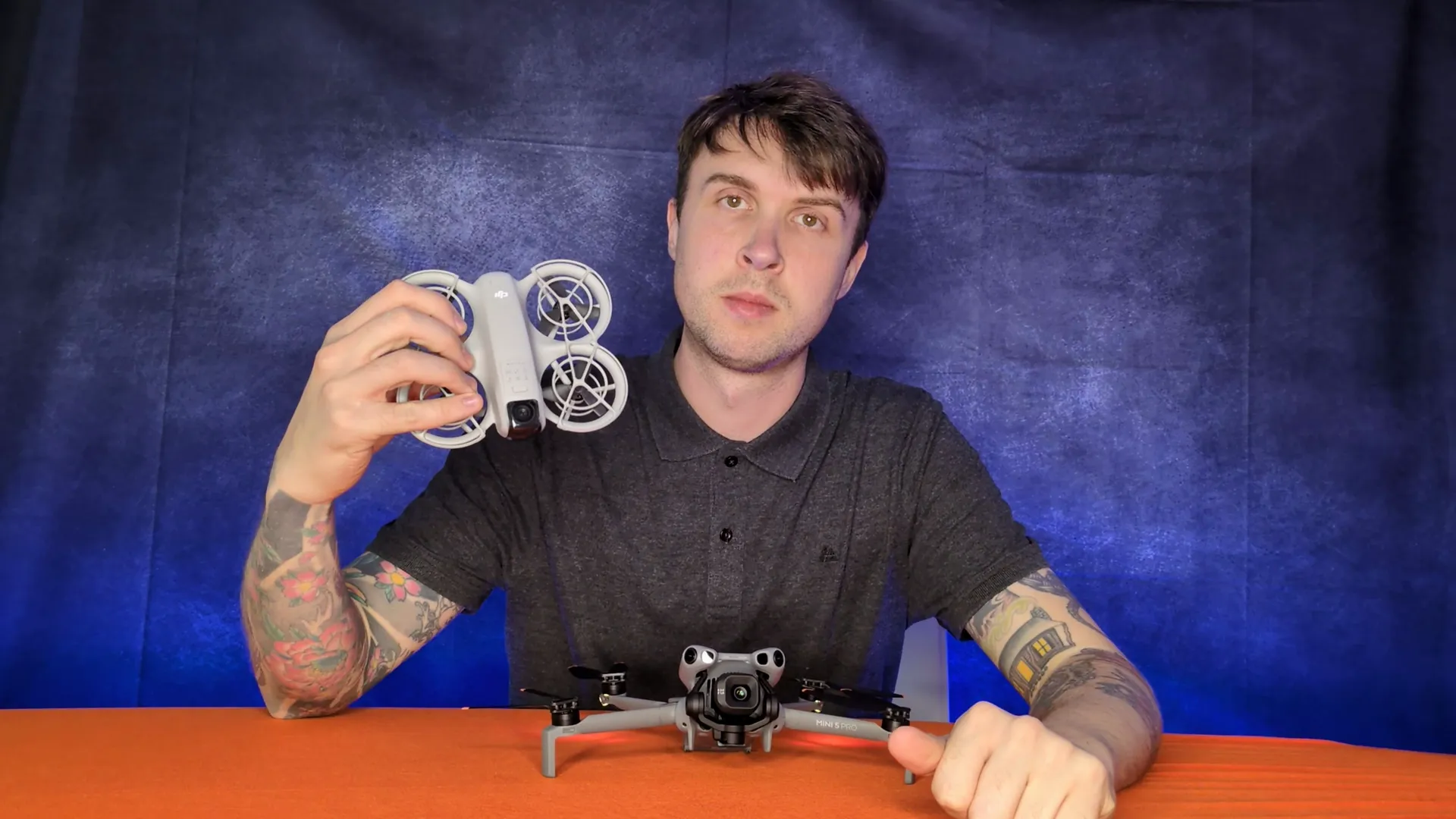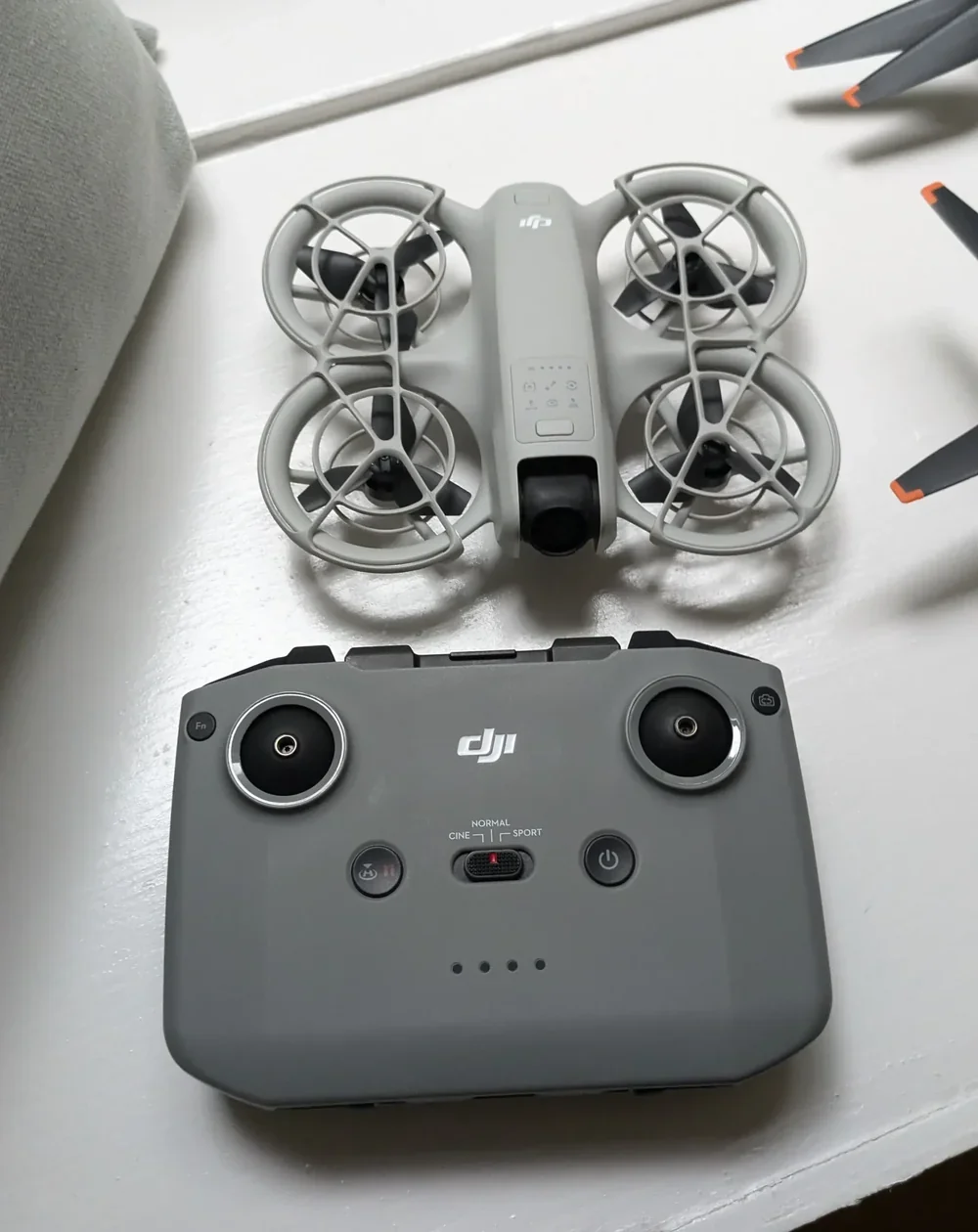
Flying a lightweight drone like the DJI Neo can be nerve-wracking on a breezy day. A common concern for pilots is understanding just how much wind their drone can actually handle before it becomes unsafe or the footage is unusable.
Pushing the limits without knowing them can lead to a lost drone or a frustrating flight.
This guide will provide clear instructions on the DJI Neo's wind resistance capabilities and offer practical strategies to help you fly safely and confidently in windy conditions.

30 Second Summary
- To ensure stable flight, operate your DJI Neo in winds up to 17.9 mph (28.8 km/h), which corresponds to its official Level 4 wind resistance rating.
- For the best video quality and safety, avoid flying when winds are forecasted to be near or above the 8 m/s limit, as the drone will tilt heavily and struggle to hover.
- When flying in any wind, anticipate a shorter flight time by monitoring your battery level closely, as the motors consume more power to fight the gusts.
- To ensure the drone has enough power to return safely, fly against the wind on your way out and fly with the wind on your way back.
- If you receive a high wind warning in the DJI Fly app, immediately lower the drone's altitude and prepare to bring it back to your home point.
Operate your DJI Neo in winds up to 17.9 mph, its official Level 4 wind resistance rating
To ensure a stable and controlled flight, you should operate your DJI Neo within its officially rated wind resistance limit. DJI specifies that the Neo can handle a maximum wind speed of 8 m/s, which translates to approximately 17.9 mph or 28.8 km/h. This corresponds to a Level 4 wind on the Beaufort scale, which is described as a "moderate breeze" capable of raising dust and loose paper.
While some tests show the drone can handle slightly higher gusts, this official rating is the maximum speed at which DJI guarantees stable performance. Flying in winds at or below this speed will allow the drone's flight controller and motors to effectively compensate and maintain a steady hover.
Avoid flying when winds are forecasted near or above the 8 m/s limit
For the best and safest results, always check a reliable weather forecast before you fly. Use a drone-specific app that shows wind speed and gusts at various altitudes, as wind is often stronger higher up than at ground level. When wind speeds approach the 8 m/s (17.9 mph) limit, the drone will have to tilt at a steep angle just to hold its position, making it difficult to control and rendering video footage shaky and unusable.
Pushing beyond this limit risks the drone being unable to fight the wind, potentially leading it to drift away uncontrollably. If the forecast shows winds near or exceeding this threshold, it is best to postpone your flight.

Anticipate a shorter flight time by monitoring your battery level closely
Flying in windy conditions forces the drone's motors to work significantly harder to maintain stability and position. This increased power consumption will drain your battery much faster than flying in calm weather. The DJI Neo's advertised 18-minute flight time is measured in a windless environment, so you must expect a considerably shorter flight time on a breezy day.
To fly safely, monitor your battery percentage constantly through the DJI Fly app. It is wise to set a more conservative "Return to Home" (RTH) battery level, such as 40% or even 50%, to ensure you have more than enough power to overcome wind resistance on the journey back.
Fly against the wind on your way out and with the wind on your way back
One of the most critical safety strategies for flying in wind is to manage your flight path relative to the wind direction. Always begin your flight by flying out against the wind (a headwind). This allows you to gauge the battery consumption during the most difficult part of the flight.
When it is time to return, the drone will have the wind behind it (a tailwind), requiring less power and providing a crucial safety margin. A common mistake is to fly out with a tailwind, which feels easy, only to find the drone lacks the battery power to fight the headwind on its return trip.

If you receive a high wind warning, immediately lower your altitude and bring it back
The DJI Fly app is equipped with a safety feature that will display a "High Wind Warning" on your screen if the drone detects that conditions are exceeding its capabilities. Do not ignore this warning. Your first action should be to lower the drone's altitude, as wind speeds are generally weaker closer to the ground due to friction from trees and buildings.
Next, stop flying further away and immediately initiate the Return to Home procedure or manually fly the drone back. If the drone is struggling to make progress against the wind, switching to Sport mode can provide a temporary boost in motor power, but be aware this will drain the battery even more rapidly.
Conclusion
The DJI Neo is a remarkably capable drone for its size, engineered to handle moderate breezes up to its Level 4 wind resistance rating.
However, success and safety in windy conditions depend entirely on the pilot's judgment. By diligently checking weather forecasts, understanding the severe impact of wind on battery life, adopting the headwind-out/tailwind-back strategy, and immediately responding to in-app warnings, you can mitigate the risks.
Respecting both the drone's limitations and the power of nature will ensure that you can continue to fly safely and capture great content, even when the weather is less than perfect.
Frequently Asked Questions
Does Sport mode improve wind resistance?
Yes, to an extent. Switching to Sport mode allows the drone to tilt at a steeper angle and apply more power to the motors. This can help it make progress against a strong headwind when it might otherwise be stuck. However, Sport mode does not increase the fundamental wind resistance rating and will drain the battery extremely quickly, so it should be used as a last resort to bring the drone home safely, not for regular flying in high winds.
How do the propeller guards affect wind performance?
The included propeller guards are great for safety in tight spaces but can negatively affect wind performance. They increase the drone's surface area, making it more susceptible to being pushed around by gusts. For the best wind performance, it is recommended to fly without the propeller guards in open areas where the risk of collision is low.
Is the gimbal stabilization effective in strong winds?
The DJI Neo's 2-axis gimbal provides excellent stabilization for smooth footage. In windy conditions, the gimbal will work overtime to counteract the drone's rocking movements. While it is very effective within the drone's rated wind limits, in very strong gusts the drone may tilt beyond the gimbal's corrective range, which can result in a tilted horizon or jerky movements in your video.
Does the drone's altitude affect how much wind it experiences?
Yes, wind speed typically increases with altitude. The wind you feel at ground level can be significantly weaker than the wind 100 meters up. It's crucial to use a drone-specific weather app that provides wind forecasts at different altitudes. If you notice your drone struggling, lowering its altitude is a primary safety measure.
Can the drone handle wind gusts that exceed its 8 m/s rating?
The 8 m/s rating is for sustained wind speed. The drone may be able to handle brief gusts that are slightly stronger, but this is risky. A strong, unexpected gust can easily overpower a lightweight drone, potentially causing it to lose control or trigger an emergency motor stop. It is always safer to fly well within the drone's official limits.
What happens if the drone is caught in a wind stronger than its maximum speed?
If the drone encounters a headwind that is stronger than its own maximum forward speed (e.g., in Normal or Cine mode), it will be unable to make forward progress and will be blown backwards, even with the control stick pushed fully forward. This is a very dangerous situation that can lead to a "flyaway." This is why flying out against the wind is so important, as you will know immediately if the drone is capable of making it back.
About the Author

Written by
Peter Leslie
Peter Leslie is a CAA-approved commercial drone pilot with 10+ years experience and over 10,000 flight hours. He holds the GVC and A2 CofC drone licences with full CAA Operational Authorisation. Peter is a member of ARPAS-UK, the UK's non-profit trade association for the drone industry. He founded HireDronePilot to connect UK businesses with qualified, insured drone operators.
Looking for More Drone Work?
Join the UK's leading network of professional drone pilots and grow your business.
Open Access
Bid on any job - all jobs open to all pilots
Grow Revenue
Access high-value commercial projects
Stay Busy
Fill your schedule with regular work
Related Articles

Our Drone Survey Service In Stirling, Scotland
Bringing you Stirling drone survey data from areas no one else can fly.

How Much Does A Drone LiDAR Survey Cost
Forecasting your drone LiDAR survey cost requires understanding what's hidden beyond the initial quote.

Step By Step Process Of Drone LiDAR Survey
Next, discover the crucial post-flight steps that determine your survey's success.
